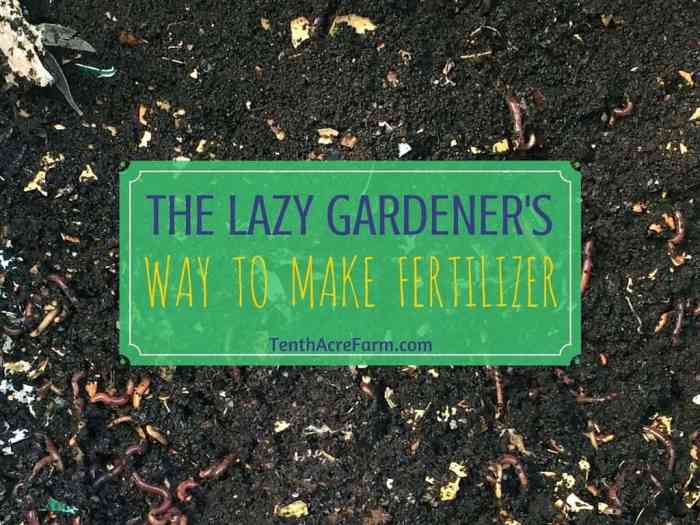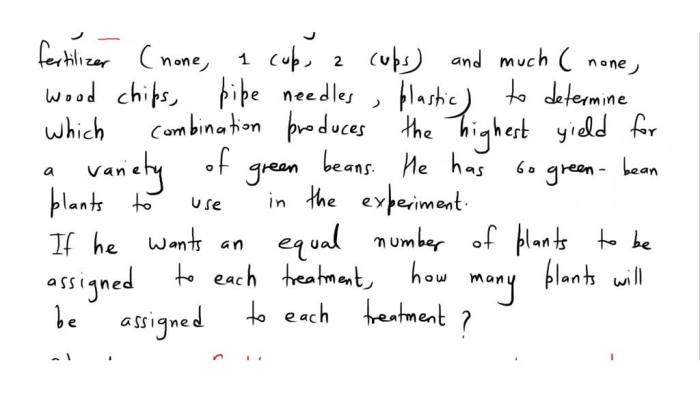A gardener wants to try different combinations of fertilizer to find the best one for their plants. This is a common question that gardeners have, and there is no one-size-fits-all answer. The best fertilizer combination for your plants will depend on a number of factors, including the type of plants you are growing, the soil conditions in your garden, and the climate in your area.
In this article, we will provide you with a step-by-step guide to help you design and conduct an experiment to test different fertilizer combinations. We will also provide you with information on the different types of fertilizers available, how to apply them, and how to monitor plant growth.
Experiment Design

Creating a controlled experiment is crucial when testing different fertilizer combinations to ensure reliable and unbiased results. The experiment should be designed to compare the effects of different fertilizer treatments on plant growth while minimizing the influence of confounding factors.
To design an experiment that compares the effects of different fertilizer combinations on plant growth, follow these steps:
- Define the research question and objectives.
- Select a suitable experimental design, such as a randomized complete block design or a factorial design.
- Determine the number of treatments and replications.
- Randomly assign treatments to experimental units (e.g., pots or plots).
- Apply the fertilizer treatments according to the experimental design.
- Measure plant growth parameters (e.g., height, leaf area, biomass) throughout the experiment.
- Analyze the data to determine the effects of different fertilizer combinations on plant growth.
Fertilizer Combinations
Fertilizers provide essential nutrients for plant growth. Different types of fertilizers have varying nutrient compositions and properties. The following table lists some common types of fertilizers and their nutrient compositions:
| Fertilizer Type | Nitrogen (N) | Phosphorus (P) | Potassium (K) |
|---|---|---|---|
| Ammonium Nitrate | 33% | 0% | 0% |
| Triple Superphosphate | 0% | 20% | 0% |
| Potassium Chloride | 0% | 0% | 60% |
| Urea | 46% | 0% | 0% |
| Monoammonium Phosphate | 11% | 48% | 0% |
Organic fertilizers are derived from plant or animal materials, while inorganic fertilizers are synthetically produced. Organic fertilizers release nutrients slowly over time, while inorganic fertilizers provide nutrients more rapidly. The choice between organic and inorganic fertilizers depends on the specific needs of the plants and the soil conditions.
To calculate the appropriate amount of fertilizer to apply, consider the plant size, soil type, and nutrient requirements of the specific crop. Soil testing can provide valuable information about the nutrient status of the soil and help determine the appropriate fertilizer application rates.
Application Methods

Fertilizers can be applied to plants using various methods, each with its own advantages and disadvantages:
Broadcasting
Broadcasting involves spreading the fertilizer evenly over the soil surface. This method is suitable for large areas and provides uniform nutrient distribution. However, it can lead to nutrient loss due to runoff or leaching.
Side Dressing
Side dressing involves applying fertilizer in a band along the side of the plant row. This method delivers nutrients directly to the root zone, reducing nutrient loss. However, it is more labor-intensive than broadcasting.
Fertigation, A gardener wants to try different combinations of fertilizer
Fertigation is the application of fertilizer through an irrigation system. This method provides precise nutrient delivery and minimizes nutrient loss. However, it requires specialized equipment and can be more expensive than other methods.
When applying fertilizer, it is important to follow the manufacturer’s instructions and safety precautions. Avoid over-fertilizing, as this can damage plants and contribute to environmental pollution.
Monitoring Plant Growth

Monitoring plant growth is essential to assess the effectiveness of different fertilizer combinations. Key indicators of plant health include:
- Height
- Leaf area
- Biomass
- Chlorophyll content
- Nutrient uptake
Measuring plant growth parameters can be done using various methods, such as rulers, leaf area meters, and biomass scales. It is important to measure plant growth parameters regularly throughout the experiment and keep a detailed record of observations.
Monitoring plant growth allows researchers to track the effects of different fertilizer combinations on plant development and identify any potential nutrient deficiencies or toxicities.
Data Analysis

Data analysis is crucial to interpret the results of a fertilizer experiment and draw conclusions about the effectiveness of different combinations. Statistical methods, such as analysis of variance (ANOVA), can be used to determine if there are significant differences in plant growth parameters among different fertilizer treatments.
The results of the data analysis should be presented in a clear and concise manner. Tables and graphs can be used to summarize the data and illustrate the effects of different fertilizer combinations on plant growth.
It is important to discuss the limitations of the experiment and suggest future research directions to further investigate the effects of fertilizer combinations on plant growth and yield.
FAQs: A Gardener Wants To Try Different Combinations Of Fertilizer
What is the best fertilizer for my plants?
The best fertilizer for your plants will depend on a number of factors, including the type of plants you are growing, the soil conditions in your garden, and the climate in your area.
How do I apply fertilizer?
There are a number of different ways to apply fertilizer, including broadcasting, side dressing, and fertigation. The best method for your plants will depend on the type of fertilizer you are using and the size of your garden.
How do I monitor plant growth?
There are a number of different ways to monitor plant growth, including measuring height, leaf area, and biomass. The best method for your plants will depend on the type of plants you are growing and the stage of growth.